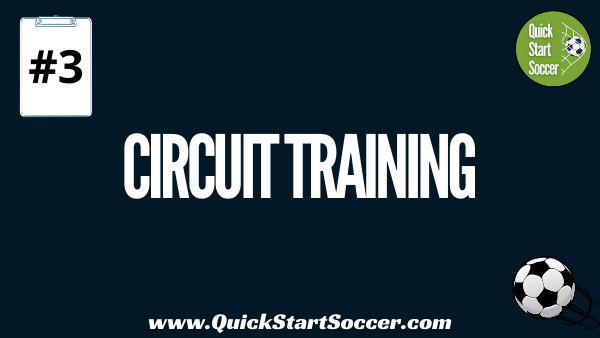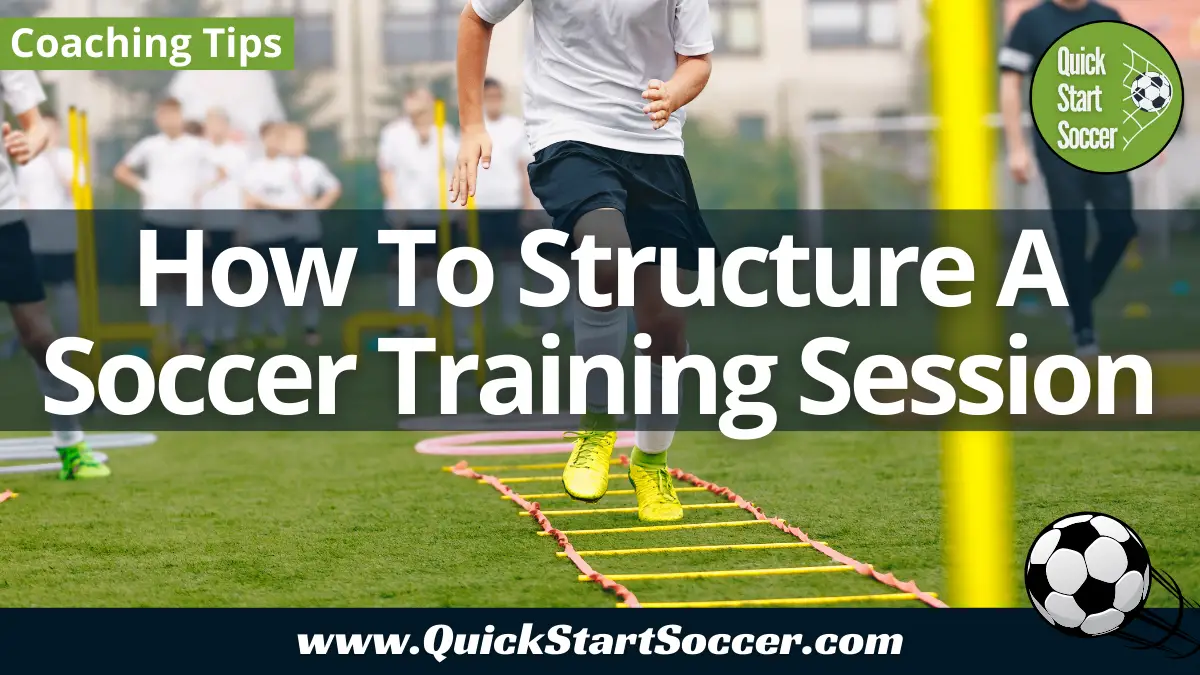Soccer Training Session Structure | 4 Ways To Plan A Session
It’s easy to find free soccer drills on the internet, but putting those drills together to make a well-structured training session is a little more difficult. A well-structured soccer training session will greatly benefit players and help them learn and improve quickly and effectively. Below we will explain how to structure a soccer training session and the four most widely used training session structures that coaches use today.
How To Structure A Soccer Training
When planning a soccer training session, there are generally four different structures you can use. These are The Simple To Complex Structure, The Whole Part Whole Structure, The Circuit Training Structure, and The Technical Training Structure. Let’s take a look at each of these one by one.
The Simple To Complex Structure

In the simple to complex structure, activities start simple and get more complex as the session progresses. When using this method, coaches will often teach an unopposed drill first in which players can practice a skill without any pressure from an opponent. Next, the coach introduces a new activity in which the players have to play against a defender or an opponent. Finally, the coach will put the players in teams and play a small-sided game that encourages the use of the new skill/technique in a real-game situation. The goal of this training session structure is to help players learn new skills in the simplest way possible before gradually putting them in more and more difficult situations.
The Whole Part Whole Structure

The whole-part-whole structure, known in education as test-teach-test, is a soccer training session structure used in many countries in Europe. This structure gives players lots of opportunities to get touches on the ball, make decisions, and most importantly, play!
In this structure, a coach will start with a small-sided game that has the conditions to bring out behaviors and skills the coach wants to see during the session. At the end of the game, the coach will run a skills practice on the same topic to re-emphasize what he wants to see before concluding with a conditioned small-sided game once again. The purpose of this method is to see where the players are at the beginning of the session, coach them in the middle, and then evaluate whether they have improved at the end.
The Circuit Training Structure

In the circuit training structure, a coach will set up a number of different ‘stations’ or drills that players can rotate through. The coach divides the players up into smaller groups and has them rotate through each station one at a time, so there are a number of different activities going on with all players at once. This method is a great structure for larger groups of players and helps keep things interesting and varied for everyone involved.
The Technical Training Structure

In the technical training structure, a coach sets up a series of technical drills that cover all parts of the game. The training session then finishes with a small-sided game to give the players a chance to put everything together! For example, the coach might do a 1v1 drill, followed by a passing drill, and then finish with a shooting drill. As with the circuit training method, this structure is great for keeping your practices interesting and your players engaged.
Wrapping Up
As you can see, there are a few different structures and methods you can use when planning your training sessions. Each one has different benefits and the one you use will depend on the level of your players and the skills/techniques you wish to coach. No matter which soccer training session structure you use, they all need to include fun and effective soccer drills, so before you go, be sure to check out all our free soccer drills to help you make fun and enjoyable practice sessions.


